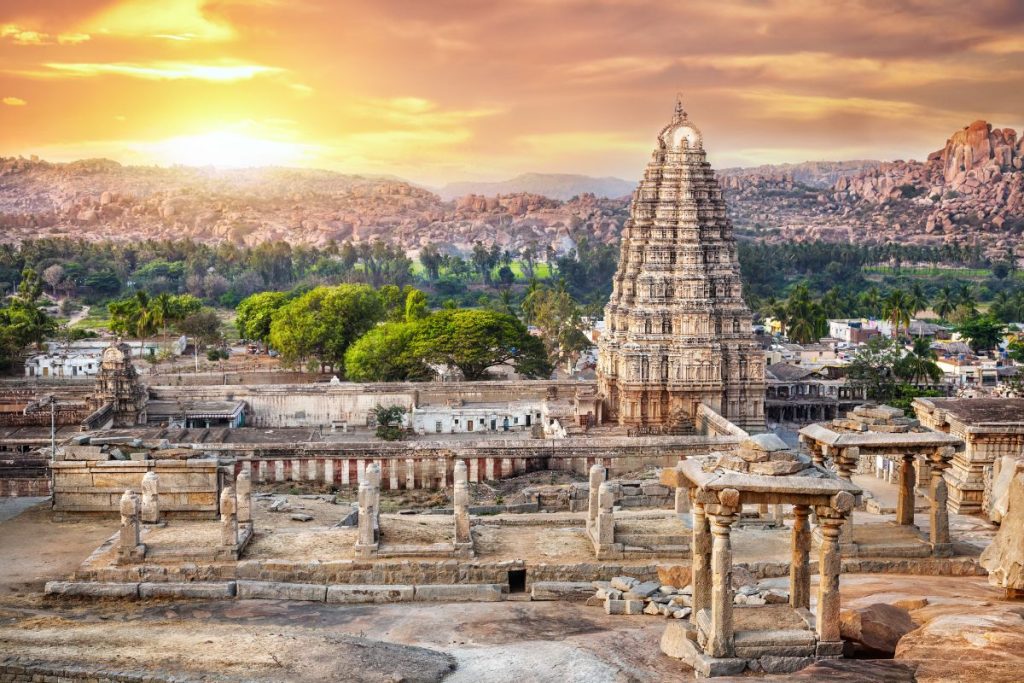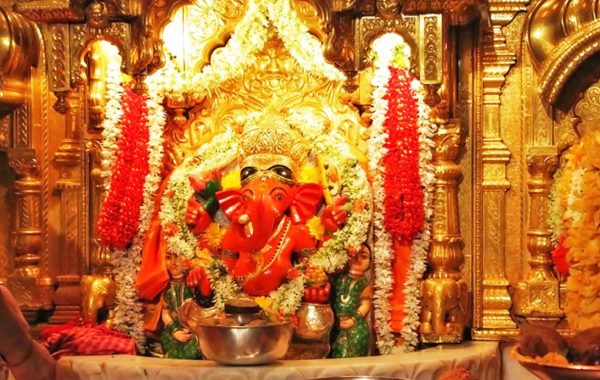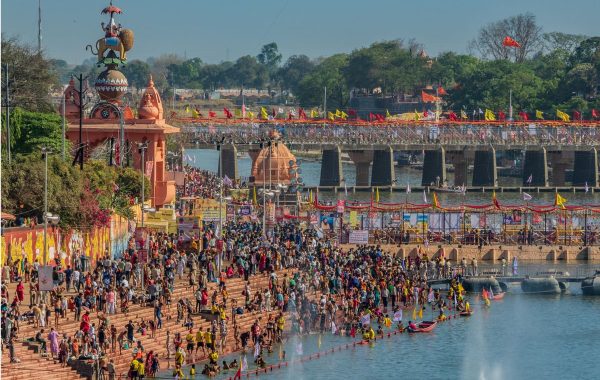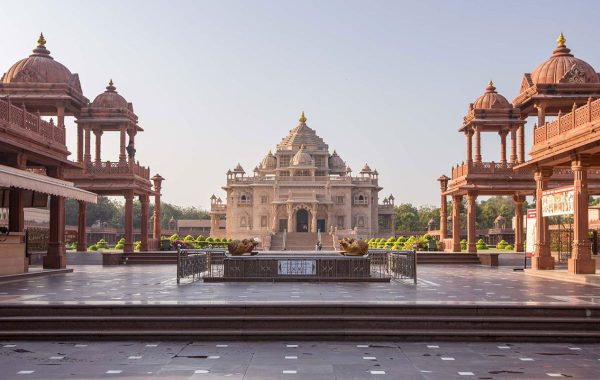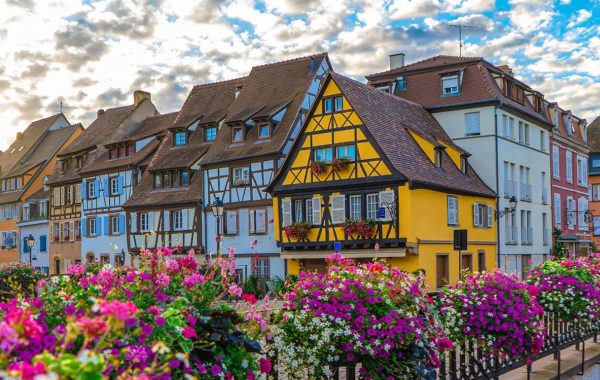Discover the architectural marvels and spiritual heritage of Hampi with our guide to the most famous temples to visit in this historic city in Karnataka.
Nestled in the heart of Karnataka, India, Hampi stands as a testament to the grandeur of the Vijayanagara Empire. Beyond its archaeological and historical significance, Hampi is a trove of spiritual sites that draw seekers, pilgrims, and curious minds alike. Here’s a look at the sacred landscapes of Hampi, unraveling the spiritual tapestry woven into its ancient stones and echoing through the corridors of time.
Virupaksha Temple
The Virupaksha Temple is a Shiva temple dating back to the 7th century. Situated within the UNESCO World Heritage Site of Hampi, this temple is a testament to the historical and cultural richness of the region. The primary deity enshrined in the Virupaksha Temple is Lord Virupaksha, also known as Pampapathi. Within the temple complex, one can find additional shrines dedicated to Bhuvaneshwari and Vidyaranya, adding layers of spiritual significance to the sacred site. The Virupaksha Temple complex is encircled by three towering gopuras or entrance towers. Of these, the principal tower, located on the eastern side, is a remarkable structure standing at an impressive height of 50 meters with nine stories. Constructed in the fifteenth century, this eastern tower serves as the main entrance to the Virupaksha Temple. The craftsmanship adorning the eastern tower is a testament to the intricate artistry of the time. Each floor of the tower features a multitude of meticulously carved depictions of Hindu gods and goddesses. This visual spectacle is a captivating journey through the divine pantheon, showcasing the cultural and religious diversity embedded in the temple’s architecture. An intriguing feature of the Virupaksha Temple is the phenomenon where the inverted shadow of the main tower falls on a wall within the temple premises. This unique occurrence adds a layer of mysticism to the sacred space. Visitors are encouraged to seek the guidance of a knowledgeable tour guide who can skillfully illuminate this fascinating aspect of the temple’s design.
Also Read: The Best Way To Holiday In Karnataka | Travel and Food Guide
Hemakuta Hill Temples
Perched atop the Hemakuta hill in Hampi, the Hemakuta group of temples forms a captivating cluster of ancient shrines. Situated in the southern expanse of the Hampi village, this elevated terrain is adorned with a multitude of temples, creating a sacred panorama against the backdrop of the village below. Renowned as one of the oldest clusters of shrines in Hampi, the temples on Hemakuta Hill hold a distinct historical significance. The allure of Hemakuta Hill, coupled with the ancient temples that grace its summit, makes it a sought-after destination for tourists traversing the Hampi trail. Visitors are drawn to the Hemakuta group of temples not only for their age-old charm but also for the panoramic views they offer. As tourists ascend the Hemakuta Hill, they are treated to a visual feast of architectural splendor, with the ancient stones narrating tales of bygone eras.
Vittala Temple
Constructed in the 15th century and dedicated to Lord Vittala, a manifestation of Lord Vishnu, this temple stands as an exemplary manifestation of the Vijayanagara style of art and architecture. Counted among the premier attractions of Hampi, the temple boasts unparalleled magnificence, particularly evident in the hundred-pillared pavilion or mandapa situated in the southwestern section. Words fall short in capturing the grandeur of this architectural marvel. The eastern and northern gateways of the temple are adorned with splendid sculptures, adding to the overall aesthetic richness. Noteworthy are the massive composite pillars within the ‘sabha mandapa,’ which, when gently tapped, produce enchanting musical notes. Within the temple complex, several significant monuments find their place, with the famous stone chariot standing out as one of its most iconic features.
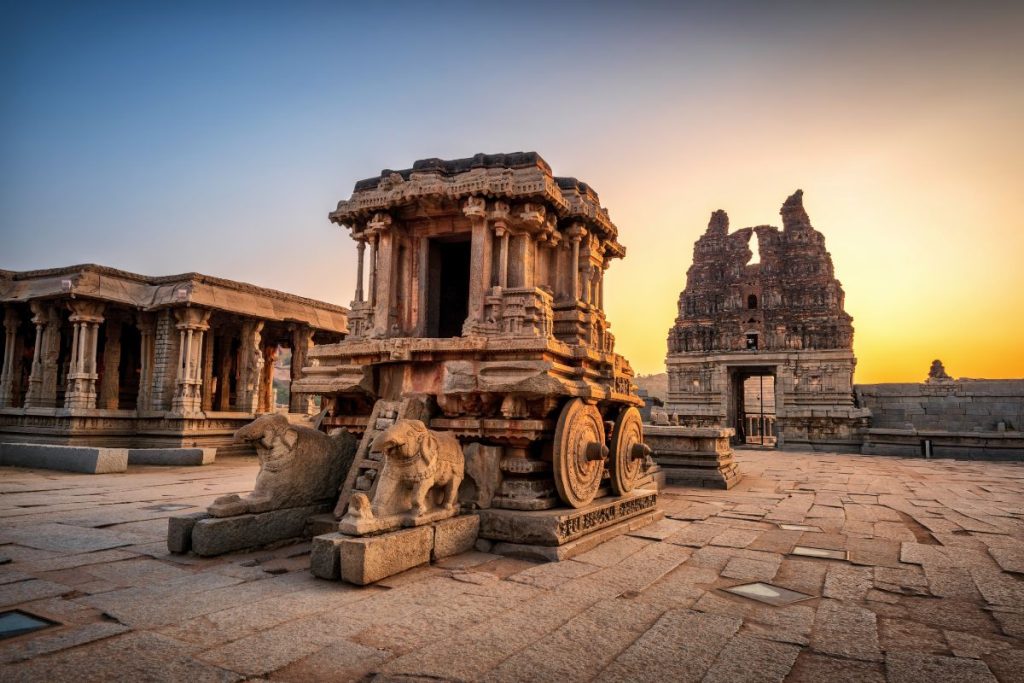
Krishna Temple
Krishnadevaraya commissioned the Krishna Temple in Hampi to commemorate his successful Orissa campaign. Legend has it that he brought back an idol of Bala Krishna, the child form of Krishna, enshrined within the temple. Although the idol is no more, the gopuram over the entrance sheds light on both the idol and the Orissa campaign. The warriors and Krishna depicted on the gopuram serve as a lasting reminder of the victory. Adorned with sculptures and carvings of Krishna or Lord Vishnu, the temple is a beautiful structure, featuring representations of the Dashavatar and scenes from the Ramayana and Krishna Leela. An impressive sight is the well-preserved massive stone hundi. Opposite the temple lies a vast clearing with covered pathways, believed to be an ancient bazaar where traders once sold their wares. The meticulous planning evident in its layout is astonishing, showcasing the survival of this ancient marketplace after centuries. Further on, open spaces reveal remnants of stone walls, possibly residences of traders, and a water tank that supplied water to the bazaar and its inhabitants. A water channel connected to an aqueduct from the river reflects the thoughtful urban infrastructure. The Krishna Temple and its bazaar stand as a testament to the enduring legacy of administration and planning, emphasizing that while wars may bring victory, it is strategic governance that survives and brings glory—an insight the Vijayanagar rulers clearly understood, evident in their emphasis on effective administration.
Sasivekalu Ganesha Temple
Situated in the heritage city of Hampi, the Sasivekalu Ganesha temple stands as a prominent landmark housing a colossal statue of Lord Ganesha meticulously carved from a single block of rock. This impressive monolithic sculpture, standing at approximately 8 feet tall, is displayed in an open pavilion. Notably, the deity’s stomach is shaped like a mustard seed, inspiring the name “sasivekalu,” where ‘sasive’ translates to mustard seed in Kannada. The lower left hand and trunk of the statue bear signs of damage, and a snake is artfully tied around the deity’s stomach. According to legend, Lord Ganesha, in an attempt to satiate his appetite, consumed excessively, prompting him to secure his belly with a snake to prevent it from bursting.
Narasimha Lakshmi Temple
This temple is renowned for housing the largest statue in Hampi, which portrays Lord Narasimha in a fearsome or wrathful form. Narasimha, meaning half-man and half-lion, is one of the ten avatars of Lord Vishnu. This impressive monolithic statue, standing at 6.7 meters tall, depicts the deity in a cross-legged position on the coils of the giant seven-headed serpent, Adishesha. Originally, the statue included Goddess Lakshmi seated on the lord’s lap, but it was vandalized and damaged in 1565. The statue of Goddess Lakshmi is now displayed in the Kamalapura Museum.
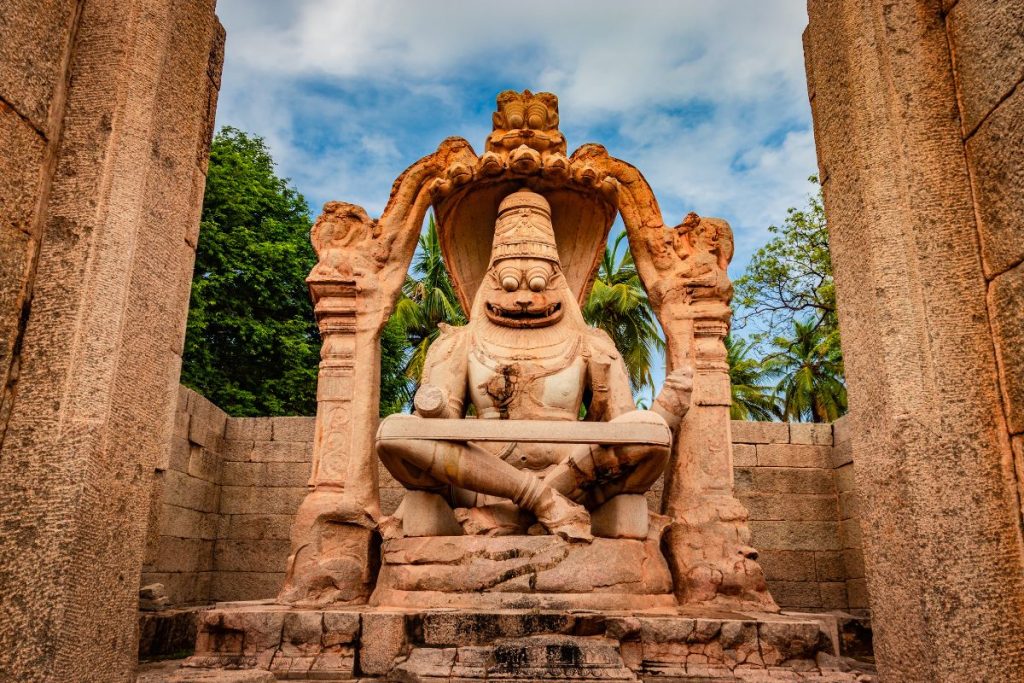
Hanuman Temple
Perched atop Anjeyanadri Hill, the Hanuman Temple, also known as the monkey temple, holds profound significance as a sacred pilgrimage center for Hindus. A pristine white-washed structure, the temple features a roof with a pyramid design, culminating in a small red dome at its summit. A distinct red flag, fluttering in the breeze, stands prominently and can be easily discerned from a considerable distance. The humble temple houses a carved image of Hanuman on a rock, while inside, a modest shrine dedicated to Lord Rama and his consort Sita is nestled. Devotees of Lord Hanuman are drawn to this simple yet spiritually charged temple throughout the year, seeking solace and connection with the revered deity.
Hampi, with its rich history and architectural wonders, transcends the boundaries of time, inviting visitors to explore not only the remnants of an ancient empire but also the spiritual essence embedded in its stones. The sacred sites of Hampi are not merely relics of the past; they are living embodiments of a spiritual heritage that continues to resonate with those who seek solace, introspection, and communion with the divine. As you traverse the spiritual tapestry of Hampi, you embark on a timeless journey, connecting with the echoes of devotion that have reverberated through the centuries.
For latest travel news and updates, food and drink journeys, restaurant features, and more, like us on Facebook or follow us on Instagram. Read more on Travel and Food Network
Trending on TFN
A Spanish Odyssey: Trafalgar’s Unparalleled Best of Spain Itinerary
Imperial Splendors: Trafalgar’s 10-Day Sojourn in Prague, Vienna, and Budapest


